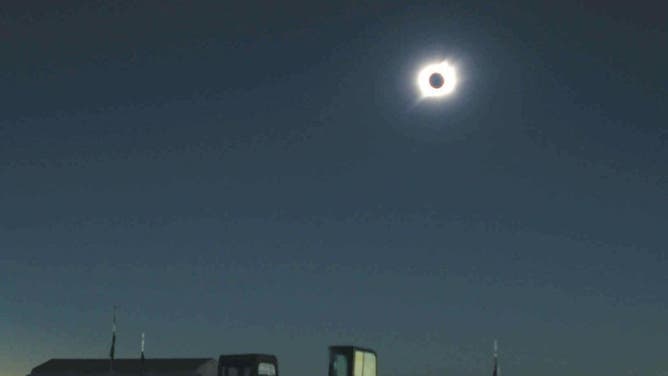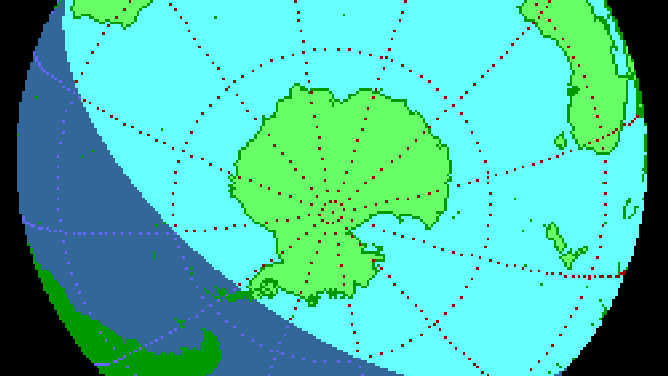Second solar eclipse in 100 years happening over Antarctica this week
Adventure travelers can cruise along the path of totality in Antarctica

This wide view shows a picture released by the Japanese Antarctic observation team from Nov. 24, 2003, of the solar eclipse taken from the Dome Fuji, some 1,000 kilometers south of the Japanese observation base at Showa. (Photo credit: AFP/AFP via Getty Images)
(Getty Images)
The total solar eclipse happens this week over Antarctica, marking a rare event that has only happened one other time in the last century.
More animals than humans will be able to observe the eclipse on Dec. 4. During the warmer summer months, only a few 1,000 people live in Antarctica.
However, travel companies are also cruising thousands of eclipse-chasers to witness the event.
Travel company AdventureSmith Explorations is operating cruises along the path of totality for eclipse-chasers to witness the event. Experiences start at $9,000 a person.
According to the website, these expeditions include expert guidance on photographing the eclipse from a National Geographic photographer and have onboard experts such as an astrophysicist or NASA scientists.
Another adventure company, Quark Expeditions says it's bringing back together some of its 2003 eclipse experts for its voyage to totality starting at $16,995.

The Japanese Antarctic observation team released this picture on Nov. 24, 2003, shows the solar eclipse taken from the Dome Fuji, some 1,000 kilometers south of the Japanese observation base at Showa. (Photo credit: AFP/AFP via Getty Images)
(Getty Images)
A total eclipse last happened over Antarctica in November 2003, and it won't happen again until 2039, according to the U.S. Antarctic Program. Total eclipses happen about every 18 months, but most occur around Earth's middle latitudes.
To anyone who has seen an eclipse, such as the 2017 Great American Eclipse, this event might seem backward as the shadow will move from east to west across the poles.
The most significant moment of the eclipse, known as totality, will last under 2 minutes.
"Eclipses near the poles are generally rare because the polar regions take up less space, so the Moon’s shadow falls on them less frequently," according to the Antarctic Sun.
According to NASA, all of Antarctica and the southern tips of Africa and Australia will experience a partial eclipse. An even smaller swath will have a total eclipse, including the South Atlantic off of Argentina across part of Antarctica to the South Pacific off of Chile.

This animation shows the path of totality on Dec. 4, 2021. (Image: NASA Goddard Space Flight Center)
Researchers from the Space Science Institute in Los Angeles, California, plan to use the unique opportunity to study Earth's ionosphere. As the sunlight dims closer to totality, researchers will measure changes to learn about differences in electrical currents between the two hemispheres.
"The eclipse is a natural experiment for us," Space Science Institute geophysicist Michael Hartinger told the Antarctic Sun. "It's giving us the closest thing we can get to controlled conditions for understanding these asymmetries between the north and the south."
The team will use measurements from Greenland and Antarctica to study the changes during the eclipse.
West Antarctica will have the best view of the eclipse, but people and penguins will experience the dimming sunlight anywhere on the continent.